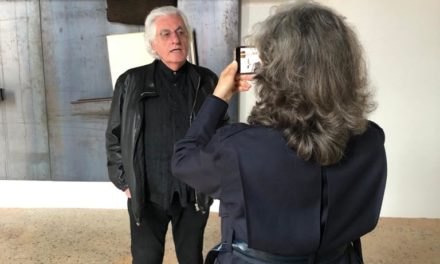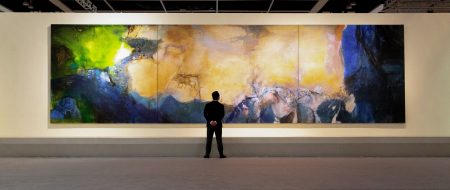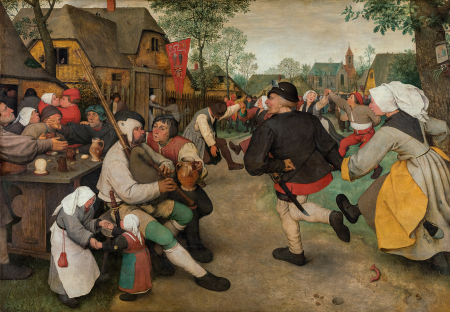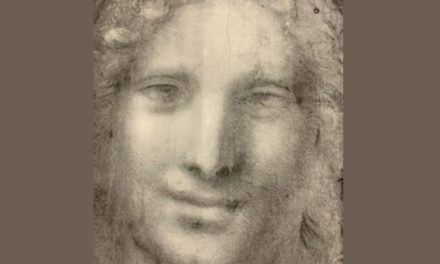Tortured artist
The most high-profile exhibitions are often the ones that bring together a maximum number of artworks. But there are smaller displays that can also be savoured with relish. Until 15 January the Musée de l’Orangerie in Paris is exhibiting 54 artworks, including three sculptures, made by the modern painter famous in the collective imagination for being a tortured artist, Amedeo Modigliani (1884-1920).
The dealer Paul Guillaume

There can be no better place to stage “Modigliani, un peintre et son marchand” (Modigliani: A painter and his dealer), since the remarkable permanent collection at the institution (with the exception of Monet’s Water Lilies) is primarily composed of the ensemble put together by the dealer Paul Guillaume (1891-1934). This exhibition is also part of the trend in recent years of valuing dealers in the context of art history. How their ambitions, tastes and influences ultimately impacted on major creations. This dandy arrived on the art scene with no experience except for a stint as an assistant at a car dealership, but with the endorsement of an unusual talent scout, the poet Guillaume Apollinaire.
Simonetta Fraquelli
As co-curator of the exhibition Simonetta Fraquelli reveals, it was while he was inspecting a shipment of rubber for tires that came from Gabon that he discovered an African art statue. It had a major impact. From then on Guillaume became obsessed, not only with the masks and statues from the Cote d’Ivoire’s Dan and Baoulé and the Fang from Gabon, as can be seen in the exhibition, but also with what they seem to have inspired in modern art.
First a sculptor
The Italian artist arrived in Paris in 1906 and discovered African art around 1909. It so happened that in 1914 Paul Guillaume, like Modigliani, was not in combat. They were both discharged for health reasons. “Modigliani was a sculptor and draftsman. Rightly or wrongly, I was the one who was responsible for engaging him in painting,” explained the ambitious young dealer. However, it is common knowledge that the sculptor switched to painting for health reasons. In 1915 he found him a studio in Montmartre.
Max Jacob
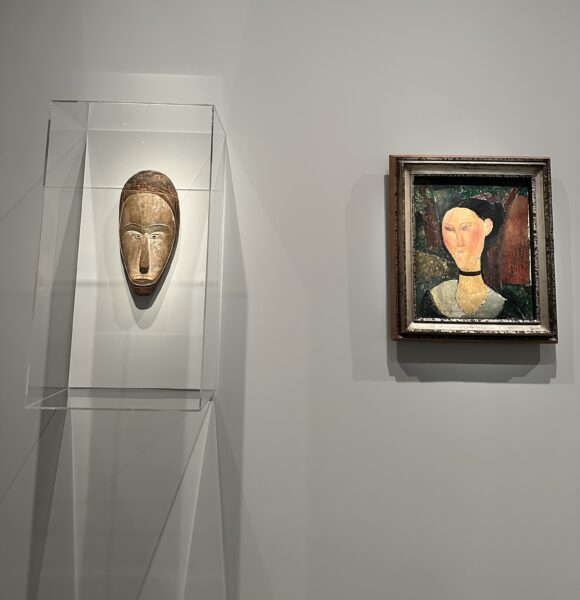
Modigliani was enthused by his new protector. He wrote on one of the four portraits he made of him, which are on display in the exhibition, the words “Novo Pilota” (New Helmsman). An allusion to his former profession, but also to the leading role he played in his life. He bought and sold a lot of Modigliani. They are all over his show-room apartment, reconstructed for the occasion. In the main gallery of Modigliani portraits at the Orangerie, composed of works that have passed through the hands of Paul Guillaume, from the poet Max Jacob to Jeanne Hébuterne, “Modi’s” partner who committed suicide, via the not yet famous Mexican muralist Diego Rivera, the brushstrokes would elongate to resemble the African masks that the dealer so cherished.
Blaise Cendrars

The travelling writer Blaise Cendrars observed: “On a Modigliani portrait / The world inside / The human heart with / Its 17 movements / in the mind / And the to-and-fro of passion”. In paintings by the artist the eyes are often empty, inanimate, as though they were depictions not of people but rather of so-called “primitive” sculptures of people.
Cubism and Cézanne
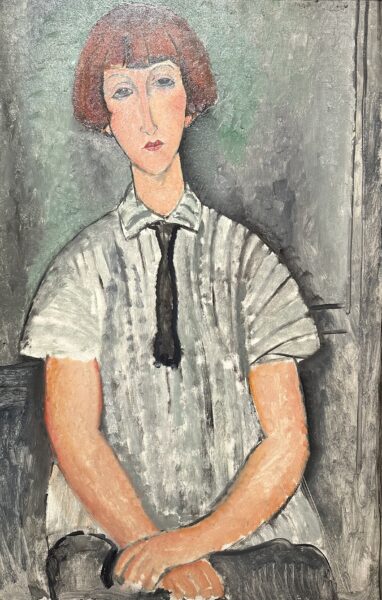
Among the noteworthy influences, we recognize certain painting backgrounds inspired by cubism. This is the case for “Fille rousse” from 1915, behind which lies a grid pattern. The backdrop for “La belle épicière” with its curved trees in light shades is perfectly Cézannian (reminiscent of the Aix-born master’s “Les Baigneurs”). Ditto for “Elvire assise” from 1919, leaning with her elbow on a table that is completely tilted (see Cézanne’s still lifes placed on rough-hewn, crooked tables).
From a dealer to another

Gradually, from 1916, another story emerged: another dealer, the Polish Leopold Zwoborski would take the place of Paul Guillaume, who began to take an interest in a growing number of talents.

After Modigliani’s dramatic death, Guillaume rekindled his passion for the artist, championing the legacy of his former early protégé whom he described as “a searing poet and a great painter among the greats.”

(1) Catalogue from the Galerie Berthe Weill, Paris 1917.
Until 15 January. https://www.musee-orangerie.fr/fr/agenda/expositions/amedeo-modigliani-un-peintre-et-son-marchand
Support independent news on art.
Your contribution : Make a monthly commitment to support JB Reports or a one off contribution as and when you feel like it. Choose the option that suits you best.
Need to cancel a recurring donation? Please go here.
The donation is considered to be a subscription for a fee set by the donor and for a duration also set by the donor.


